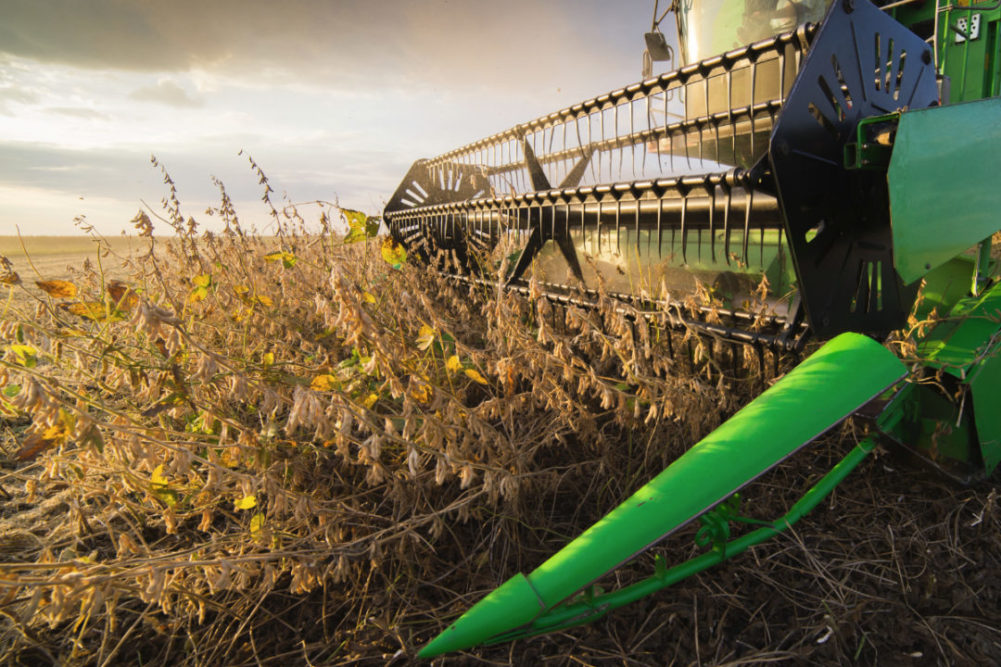KANSAS CITY, MO. — The September Crop Production report from the US Department of Agriculture (USDA) before the gut slot harvest of this year’s corn and soybean crops took analysts by surprise. Just last month, the USDA forecast record-high 2022 US soybean production as well as higher-than-expected acres planted to corn in its August Crop Production report.
But a lot can happen in a month, and 30-plus days of above-average temperatures with little to no rainfall throughout the Corn Belt ultimately led to a significant reversal in harvest expectations.
In its Sept. 12 Crop Production report, the USDA forecast the soybean yield at 50.5 bushels per acre, down 2.7% from an all-time high projection of 51.9 bushels per acre last month, and down 1.8% from 51.4 bushels per acre in 2021. Soybean production was estimated at 4.378 billion bushels, down 3.4% from the record-high 4.531 billion bushels projected in August, and down 1.3% from 4.435 billion bushels produced a year ago. The September estimates fell not only well below the average trade expectation of 4.496 billion bushels produced with a yield of 51.5 bushels per acre, but they also landed outside the expected range of trade expectations.
“People were not positioned well for that kind of a cut, and the market showed their surprise,” said Brian Harris, executive director and owner, Global Risk Management.
After the midday reports were released, Chicago soybean futures surged, pulling soybean meal and soybean oil futures higher as well. But Harris said he felt the rally may have been too sharp given the season’s timeframe.
“I’m not sure the prices we’ve reached will be sustainable with the harvest upon us, and we’re probably a little higher than we need to be,” Harris said, adding he expected soybean prices to settle down to $14 to $14.25 a bushel in coming weeks. The day after the report was released, soybean futures began to ease. But with soybean carryover on Sept. 1, 2023, forecast at 200 million bushels by the USDA in its Sept. 12 World Agricultural Supply and Demand Estimates (WASDE) report, down from 245 million bushels forecast in August and from 240 million bushels in 2022, high prices were supported.
“That ending stock number of 200 million bushels is certainly very tight, and we’re going to have to watch every bushel,” Harris said.
Analysts felt there was some wiggle room in the latest export number estimated for soybeans. In the Sept. 12 WASDE, the USDA forecast 2022-23 soybean exports at 2.085 billion bushels, down from 2.155 billion bushels projected in August. But export demand was under pressure, especially with the ongoing COVID-19 lockdowns in China, the world’s leading importer of soybeans, and from competition from South America with Brazil expected to produce a record-large crop in 2022-23.
“The key thing now is the return of the weekly US export sales report, which might highlight lower demand,” said Steve Freed, vice president of research at ADM Investor Services.
On Aug. 31, the Foreign Agricultural Service of the USDA said it was withholding its weekly export sales updates until Sept. 15 due to unanticipated difficulties with the launch of its new reporting system.
Analysts also were taken aback by the soybean crush forecast in the Sept. 12 WASDE. The USDA reduced 2022-23 projected crush to 2.225 billion bushels from 2.245 billion bushels in August.
“The 20-million-bushel cut in crush was surprising because we’re looking at record-high crush margins all the way out through the first half of next year,” Harris said. “Clearly, with the money the crushing community is making, there’s no incentive for them to slow down.”
While lower numbers had been expected for corn estimates, the reduction in actual planted and potentially harvested acres was startling, according to analysts. In its March 31 Prospective Plantings report, the USDA reduced the number of projected acres planted to corn in 2022 by 4% to 89.49 million acres. But in the Aug. 12 Crop Production report, the USDA increased the number of acres planted to corn to 89.821 million acres with an estimated 81.84 million acres for harvest. But the Sept. 12 Crop Production report showed those numbers had fallen even below the March 31 projections to 88.608 million acres planted to corn with an expected harvest of 80.844 million acres for grain, down from 93.357 million planted acres and 85.388 million acres harvested in 2021.
While the USDA’s 2022 corn production forecast at 13.944 billion bushels was down 3% from its August projection of 14.359 billion bushels, and also down 8% from 2021’s production of 15.115 billion bushels, the Sept. 12 estimates were within the range of trade expectations. Forecast of corn carryover on Sept. 1, 2023, of 1.219 billion bushels, down 12% from 1.388 billion bushels in August and down 20% from 1.525 billion bushels in 2022, sets the stage for firm prices.
“Both balance sheets for corn and soybeans are now tight enough to force some rationing of demand through higher prices,” said Bill Lapp, president, Advanced Economic Solutions.


